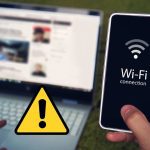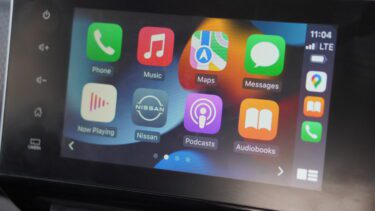If your iPhone keeps disconnecting from your Mac, it’s difficult to transfer data or share a mobile data connection. Fortunately, plenty of solutions exist to help solve this problem. Keep reading to discover five ways you can stop your iPhone from disconnecting from your Mac. These tips will work on all MacBook devices, as well as desktop versions.
Reset Your iPhone’s Location and Privacy Settings
If your iPhone keeps disconnecting from your Mac, then you’ll need check the settings first. Resetting privacy and location settings has worked in some cases, so it’s worth giving this a try before moving on to the more complex solutions. Step 1: Open your iPhone’s Settings and go to General. Step 2: Scroll down to Reset. Step 3: Select Reset Location & Privacy. Step 4: Enter your iPhone’s passcode. On the next screen, tap the Reset Settings button. After completing the steps above, your iPhone’s location and privacy settings will revert to their factory default.
Check Your Finder Preferences
Sometimes, your iPhone might be connected to your Mac – but you can’t see it on your screen. This is an easy solution to fix and only requires ticking one box. Follow the steps below to do this. Step 1: Open Finder on your Mac. Step 2: When the app opens, select Finder in the top left of the toolbar. Step 3: Click on Preferences. Step 4: On the General tab, you’ll see a list of options that you can tick and untick. Make sure that External disks has a tick next to it.
Use Your Activity Monitor
As an alternative to the Mac terminal, you can alter your USB settings using your device’s Activity Monitor. To do this: Step 1: Go to the magnifying glass in your Mac’s toolbar and search for Activity Monitor. Step 2: Click on activity monitor.app. Step 3: Tap on the Disk tab at the top. Step 4: Under this tab, you should see a process called usbd. Highlight this and hit the x button above it. Step 5: On the next window, select Force Quit.
Use the Mac Terminal
If you’ve tried seeing if your iPhone is connected but now showing and still haven’t had any luck, you can try using your Mac terminal to fix the issue. This might seem daunting, but don’t worry; you only need to use a quick code. To stop your iPhone disconnecting from your Mac by using the terminal: Step 1: Click on the magnifying glass in your Mac’s toolbar. Step 2: Search for Terminal. Step 3: Click on terminal.app when it shows up. Step 4: In Terminal, type this without the full stop on the end: sudo killall usbd. Step 5: Press the Enter key on your Mac when asked to enter your password.
Use a Different USB Port
In some cases, you might have an issue with an individual USB port rather than problems with your Mac settings. You can try fixing this by cleaning any dust or objects that have found their way into the port you normally use. If that doesn’t work, try using a different USB port on your Mac. Should that one work, you’ll need to replace the non-working one at some stage – but you can use the other for now.
Replace Your USB Cable
If all else fails, you might have an issue with your iPhone’s USB cable. Before you buy a new one, look to see if you’ve got any spares you can use. Alternatively, ask your friends and family to see if they can lend you one. You can always buy a new USB cable if none of the above works. And if you followed the steps in the section about your Terminal app, you should be able to reconnect your iPhone with your Mac and not have any problems doing so.
Keep Your iPhone Connected to Your Mac
Having your iPhone connect to and disconnect from your Mac at its will is annoying, but fixing it isn’t too tricky. You’ll often find that you don’t need to replace your USB; you need to tweak a couple of settings on one of your devices. Now you’ve read this article, you should have everything you need to keep your iPhone connected to your Mac. However, you can always visit an Apple Store or contact the company’s support team if the problem persists. The above article may contain affiliate links which help support Guiding Tech. However, it does not affect our editorial integrity. The content remains unbiased and authentic.




















